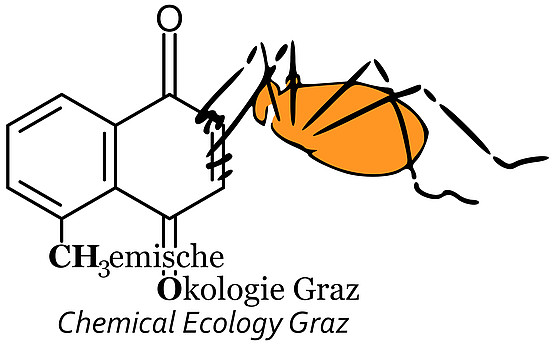FWF-Projekt P33629-BBL "Diversification in exocrine systems"
Diversification in exocrine systems: How oil glands evolved
PI: Günther Raspotnig; project associate: Michaela Bodner
Scientific Background: With more than 10.000 species described, oribatid mites produce a stunning diversity of natural exocrine components that are expelled from large opisthosomal oil glands. These secretions – functionally allomones and pheromones - represent a perfectly suited model to study, understand and reconstruct the evolutionary history of secretion diversification in an exocrine system (“phylogenetic chemosystematics”).
Current knowledge: Apart from a chemical trait in so-called “Astigmata-compounds”-bearing oribatids (a lineage from lower oribatids to astigmatid mites, characterized by a set of terpenes and aromatics), very little is known about the chemistry of oil gland secretions. However, cursory investigations revealed that particularly the chemistry of higher Oribatida (= the vast majority of oribatid mites) represents an enormously rich source of novel compounds, indicating a network of chemical traits across Oribatida and many compounds new to science.
Hypotheses & aims: We hypothesize that many more chemically distinct traits in Oribatida exist, besides “Astigmata compounds” from lower Oribatida. A network of different biosynthetic pathways underlying novel chemical traits is expected. In addition, chemical traits are considered to have diversified during evolution, in total leading to the richness of compounds/compound classes in the secretions of extant oribatid species. This “oribatid chemosystematic picture”, i.e. the evolutionary history of different chemical traits in the oil gland secretions of Oribatida, is aimed to be resolved and logically reconstructed.
New scientific ground: Our major goal is to present a first comprehensive model for the evolutionary history of secretion chemistry in an exocrine system from its ancient beginnings over diversification periods to its extant diversity.
Methods include: i) extraction and chemical analysis of oil gland secretions of a representative selection of oribatid taxa, using modern mass spectrometric and nuclear magnetic resonance spectroscopic methods. ii) Evaluation of the phylogeny of Oribatida, using a novel transcriptomic approach, and iii) tracing the evolutionary history of oil gland compounds all across Oribatida by techniques of Ancestral Character State Reconstruction (ASR).
Scientists involved: Günther Raspotnig (PI, zoology, chemical ecology) & Christoph Hahn (co-applicant; evolutionary biologist specialized in transcriptomics) in collaboration with Roy A. Norton (acarology), Hans-Jörg Leis & Olaf Kunert (analytical chemistry) and Michael Heethoff (ecology).
Günther Raspotnig
GruppenleiterInstitut für Biologie
Universitätsplatz 2
8010 Graz

